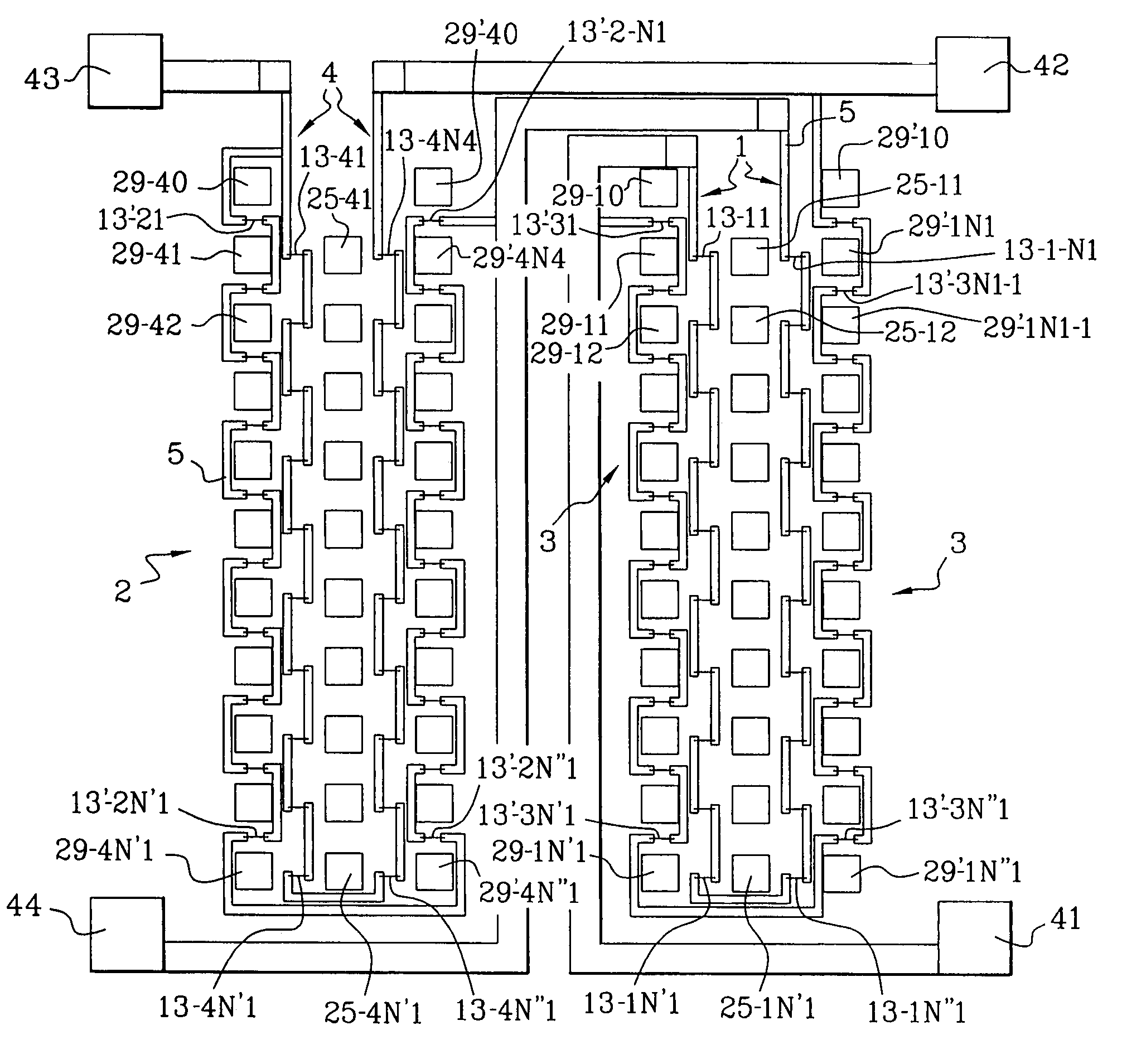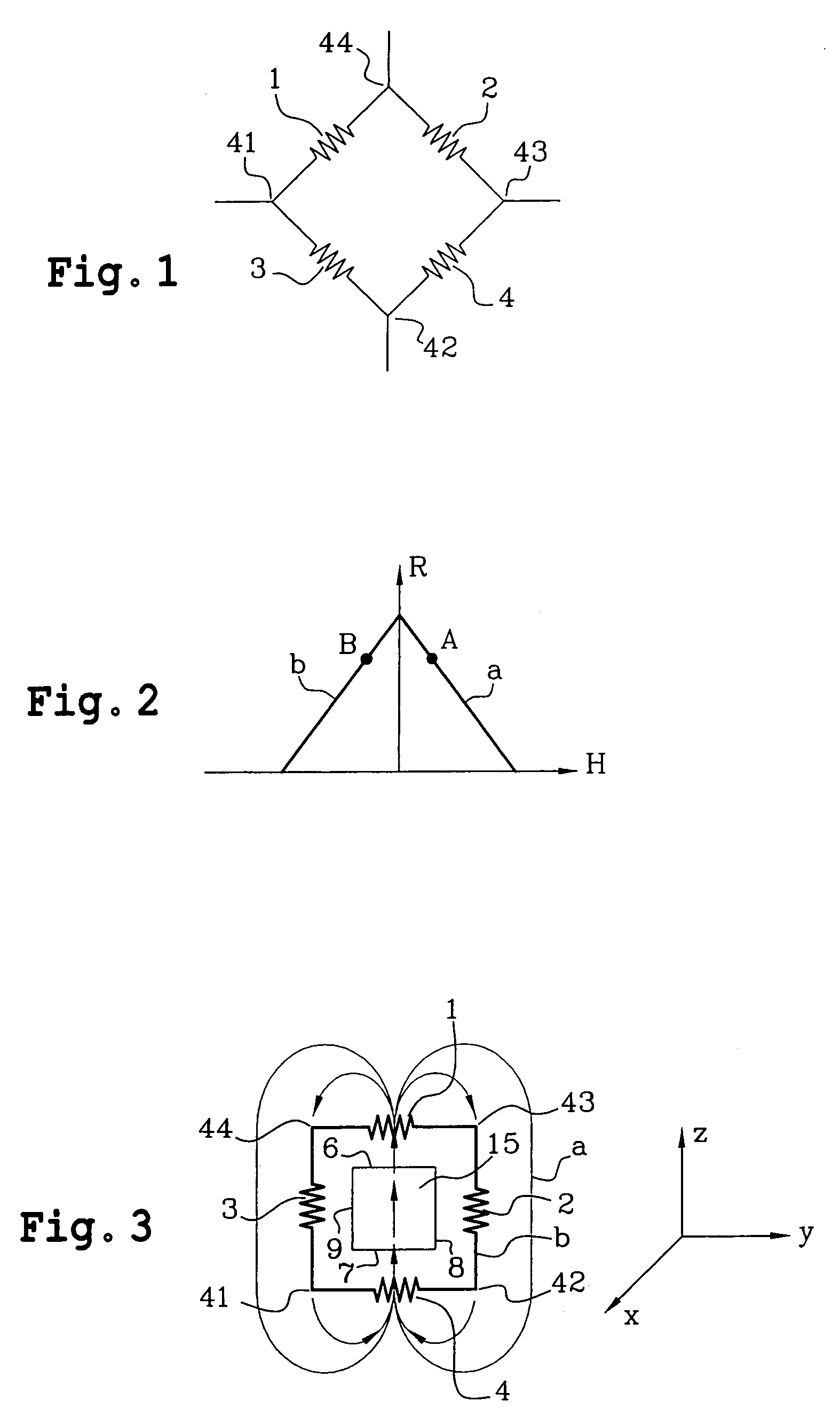Sensor structure and magnetic field sensor
a sensor and magnetic field technology, applied in the direction of magnetic field magnitude/direction, measurement devices, instruments, etc., can solve the problems of reducing the field operating range with respect to the range, affecting the performance of the device directly, and m is precisely the order of magnitude of positioning, so as to improve the reproducibility of sensor performance and the effect of greater sensitivity
- Summary
- Abstract
- Description
- Claims
- Application Information
AI Technical Summary
Benefits of technology
Problems solved by technology
Method used
Image
Examples
Embodiment Construction
OF EMBODIMENTS
[0024]In the figures, the components having the same function are represented by identical reference numbers. The term rectangular which will be used frequently to characterise the shape of the magnets or magnetoresistors must be taken in the most general sense of the term which includes square shapes.
[0025]The operation of a dividing bridge and the operation of a Wheatstone bridge should first of all be pointed out with reference to FIG. 1.
[0026]A dividing bridge is formed as described above by two magnetoresistors for example magnetoresistors 1 and 3 connected in series between a point 44 and a point 42. A reference voltage is applied between the points 42, 44. The magnetoresistors 1 and 3 are polarised by magnetic fields of opposite directions. An output voltage measured at the terminals of either of the two magnetoresistors 1, 3 is representative of the variation of the value of the magnetoresistors. This magnetoresistor value is itself a function of the value of t...
PUM
 Login to View More
Login to View More Abstract
Description
Claims
Application Information
 Login to View More
Login to View More - R&D
- Intellectual Property
- Life Sciences
- Materials
- Tech Scout
- Unparalleled Data Quality
- Higher Quality Content
- 60% Fewer Hallucinations
Browse by: Latest US Patents, China's latest patents, Technical Efficacy Thesaurus, Application Domain, Technology Topic, Popular Technical Reports.
© 2025 PatSnap. All rights reserved.Legal|Privacy policy|Modern Slavery Act Transparency Statement|Sitemap|About US| Contact US: help@patsnap.com



